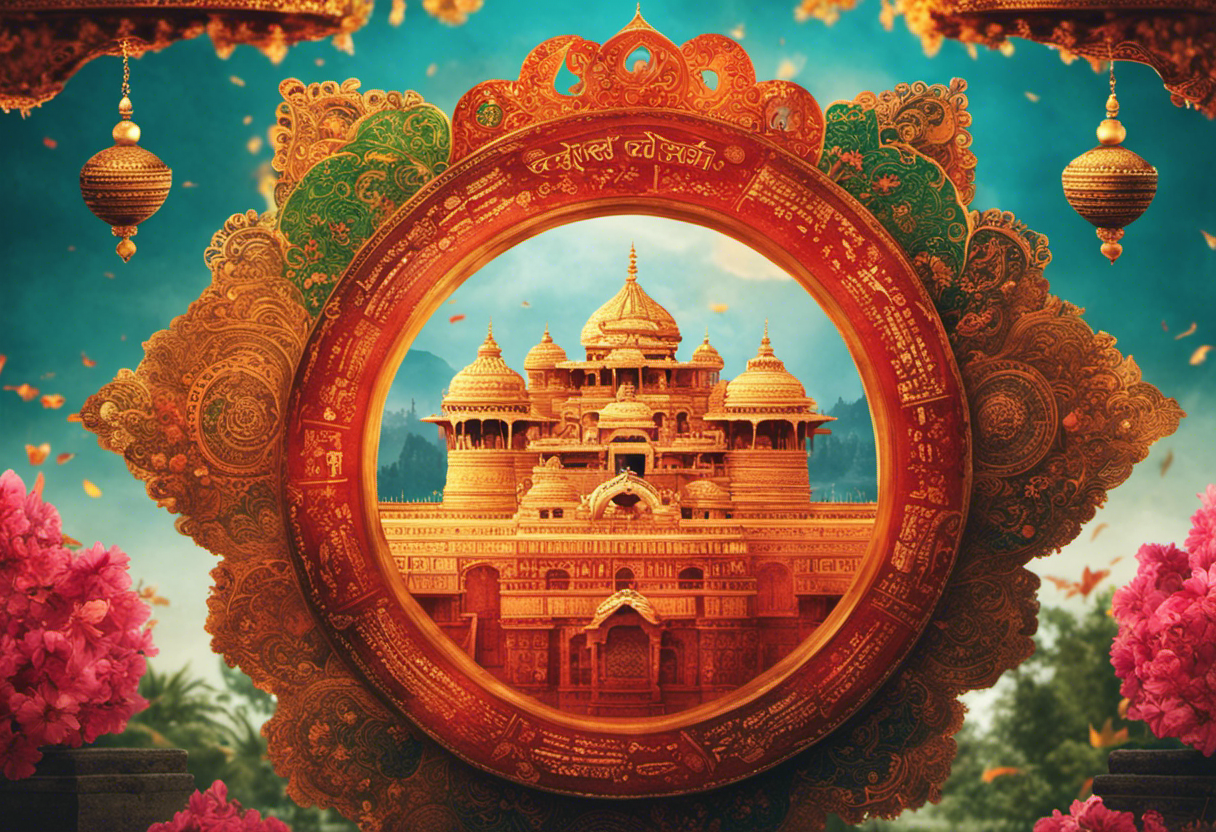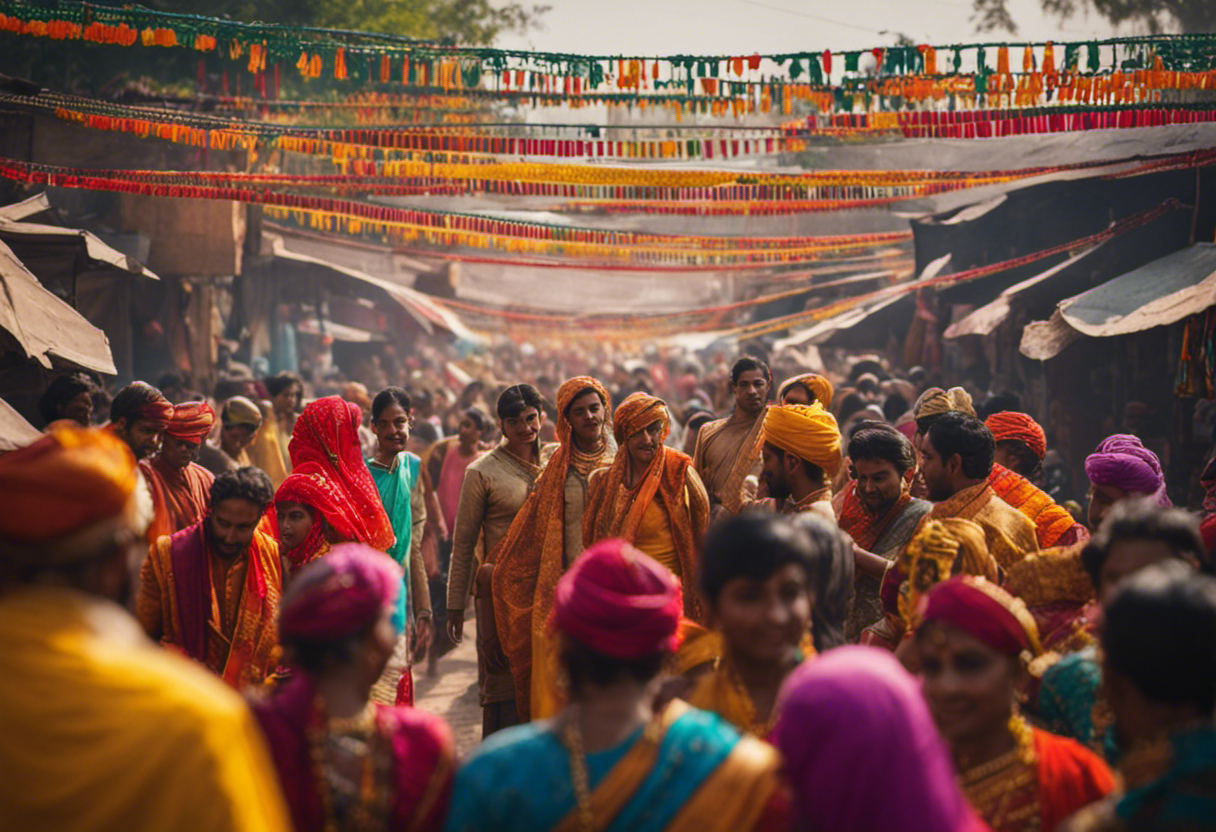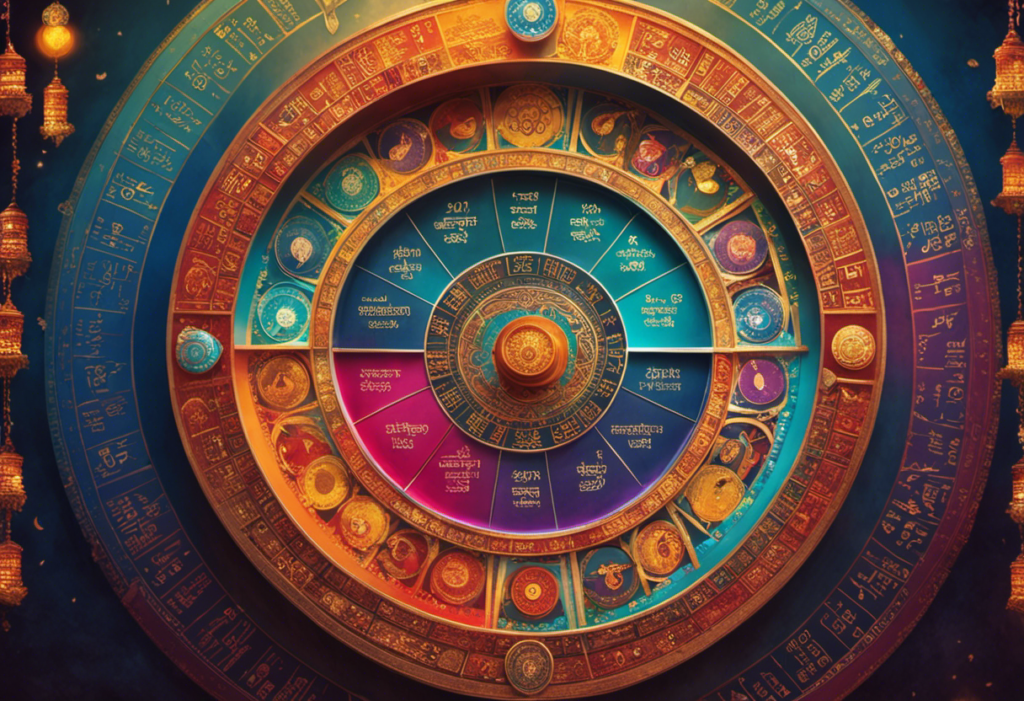Have you ever wondered about the names and significance of the months in Vikram Samvat?
In this comprehensive article, we delve into the historical origins, symbolism, and meaning behind each month in this ancient calendar system.
By understanding the lunar cycle and its influence on Vikram Samvat, we gain insight into the celebrations and festivals associated with each month.
Join us as we explore the richness and depth of the months in Vikram Samvat.
Key Takeaways
- The Twelve Months in Vikram Samvat include Chaitra, Vaisakha, Jyeshtha, Ashadha, Shravana, and more, each with its own significance and associated festivals.
- Vikram Samvat is named after King Vikramaditya of Ujjain and has historical origins that can be traced back to the Saka and Vedic calendars.
- Each month in Vikram Samvat holds unique symbolism and meaning, reflecting different aspects of Hindu culture and religion.
- The months in Vikram Samvat are associated with various celebrations and festivals like Navratri, Diwali, Holi, and Janmashtami, which hold immense cultural and religious significance across India.
The Twelve Months in Vikram Samvat: A Comprehensive Overview


The twelve months in Vikram Samvat provide a comprehensive overview of the calendar system used in various regions of South Asia. Each month holds cultural significance and is closely associated with agricultural practices.
The first month of Vikram Samvat is called Chaitra, which falls in March-April. This month marks the beginning of the Hindu New Year and holds immense cultural and religious importance. It is a time of celebration and new beginnings, with festivals like Holi and Navratri being observed during this month.
Following Chaitra is the month of Vaisakha, which corresponds to April-May. This month is significant for agricultural practices as it marks the onset of the harvest season. It is during this time that farmers sow their seeds and prepare for a bountiful harvest.
Jyeshtha, the third month of Vikram Samvat, falls in May-June. This month is associated with the scorching heat of summer and holds religious importance with the celebration of festivals like Buddha Purnima.
The remaining months of Vikram Samvat, Ashadha, Shravana, Bhadrapada, Ashwin, Kartika, Margashirsha, Pausha, Magha, and Phalguna, continue to hold cultural significance and are linked to various agricultural practices specific to each region.
The Historical Origins of Vikram Samvat: Tracing the Calendar’s Roots


Vikram Samvat, also known as the Hindu calendar, has its historical origins rooted in ancient Indian history and is a testament to the rich cultural and religious traditions of the region. Tracing the historical origins of Vikram Samvat provides insights into its cultural significance. The calendar is named after King Vikramaditya of Ujjain, who is believed to have established it in 57 BCE. However, the roots of Vikram Samvat can be traced back even further.
The Hindu calendar is based on lunar cycles and has been an integral part of the Indian civilization for millennia. It incorporates elements from various ancient calendars, including the Saka calendar and the ancient Vedic calendar. These calendars were used to mark important religious and agricultural events, and their influence can be seen in the structure of Vikram Samvat.
Vikram Samvat not only serves as a way to keep track of time but also holds immense cultural significance. It is used to determine religious festivals, auspicious days for weddings and other important events, and agricultural activities. The calendar reflects the deep connection between the Indian society and its traditions, as well as the importance of maintaining a harmonious relationship with nature. In this way, Vikram Samvat acts as a bridge between the past and the present, preserving the cultural heritage of ancient India.
The Symbolism and Meaning Behind Each Month in Vikram Samvat


With a deep understanding of the cultural traditions and religious practices, each month in Vikram Samvat holds its own unique symbolism and meaning for the Hindu community. The symbolism behind each month in Vikram Samvat reflects the diverse aspects of Hindu culture and religion.
The cultural significance of the months can be seen in various ways. For example, the month of Chaitra, which falls in March or April, marks the beginning of the Hindu New Year and is associated with new beginnings and renewal. It is a time for cleansing and purifying the mind and body.
The month of Shravan, which falls in July or August, is dedicated to Lord Shiva and is considered highly auspicious. Devotees observe fasts and offer prayers to seek the blessings of Lord Shiva during this month.
Kartik, which falls in October or November, is known as the month of lights. It is a time when Hindus light lamps and offer prayers to Lord Vishnu and Goddess Lakshmi, seeking prosperity and wealth.
These are just a few examples of the symbolism and cultural significance behind each month in Vikram Samvat. The calendar acts as a guide for Hindu rituals and festivals, providing a deeper connection to the religious and cultural heritage of the community.
Celebrations and Festivals Associated With the Months in Vikram Samvat


One of the most important festivals associated with the first month in Vikram Samvat is Navratri, which is celebrated for nine nights with great enthusiasm and devotion. Navratri, meaning ‘nine nights’ in Sanskrit, is dedicated to the worship of the Hindu goddess Durga. It is observed in the month of Ashwin, which usually falls in September or October.
During Navratri, people engage in various celebration traditions and religious rituals. The festival is marked by vibrant and colorful decorations, fasting, and nightly performances of traditional dances such as Garba and Dandiya. Devotees also visit temples to offer prayers and seek blessings from the goddess Durga. Each night of Navratri is associated with a different form of the goddess, and special rituals are performed accordingly.
Apart from Navratri, other festivals celebrated in Vikram Samvat include Diwali, Holi, Raksha Bandhan, and Janmashtami. These festivals hold immense cultural and religious significance and are observed with great fervor across India. The celebration traditions and religious rituals associated with these festivals vary, but they all serve as occasions for people to come together, express their devotion, and celebrate the rich heritage of their faith.
The Lunar Cycle and Its Influence on the Months in Vikram Samvat


The Lunar Calendar plays a crucial role in determining the months in Vikram Samvat and their corresponding dates and durations. The Vikram Samvat calendar is based on the lunar phases, which means that each month begins with the new moon and ends with the full moon. This lunar cycle has a significant influence on the cultural practices and traditions associated with each month.
The lunar phases determine the timing of various festivals and celebrations in Vikram Samvat. For example, the festival of Diwali, which marks the Hindu New Year, falls on the new moon day of the month of Kartik. Similarly, Holi, the festival of colors, is celebrated on the full moon day of the month of Phalgun.
The lunar cycle also affects the duration of each month in Vikram Samvat. As the lunar month is based on the moon’s revolution around the Earth, it is slightly shorter than the solar month. Therefore, the duration of each month in Vikram Samvat varies from year to year, with some months lasting 29 days and others lasting 30 days.
Understanding the lunar cycle and its influence on the months in Vikram Samvat is essential for accurately determining the dates of festivals and cultural events. It helps in preserving and continuing the rich traditions and practices associated with each month.
Conclusion
In conclusion, the months in Vikram Samvat hold great significance and are deeply rooted in history and symbolism.
Each month is associated with specific celebrations and festivals, adding to the cultural richness of this ancient calendar system.
The lunar cycle plays a pivotal role in determining the length and order of the months.
Overall, the understanding and appreciation of Vikram Samvat provide a fascinating glimpse into the cultural and religious traditions of the region, evoking a sense of awe and admiration for its enduring legacy.




